In 1950, Smith & Wesson opened a new revolver product line – the J-frame. Larger than the I-frame that preceded it, it was designed around the 38 S&W Special, the (largely de facto) police service revolver round. The idea was a smaller, five-shot concealment gun for plain clothes, administrators and off-duty use. It was named the Chief’s Special after that year’s IACP conference.
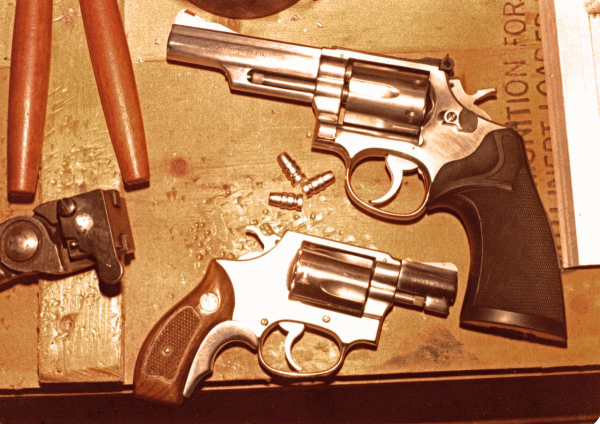
Variants followed, then in 1964 or 1965, the first regular production all stainless-steel firearm arrived: the S&W Model 60 Stainless Chief’s Special.
Fast forward to the late 1970s. I was new to police work, having worked the street for a short time. Having a young family meant I had to wait to get a second gun – one that was useful for off-duty use as the duty guns of the era (as well as holster technology) weren’t always the best suited for the task. When I came up with the money, I waited for Law Enforcement Equipment Company in Kansas City MO to actually have an M60 in stock.
Like most S&W guns – nearly all stainless and many of Magnum caliber – the M60 was in short supply and people paid premium prices in the gun shops. Getting it through LEECO meant getting it for just about retail – vastly cheaper than in the non-LE market.
Once I got it, I was at first less than impressed. The sights were “skinny;” the ca. 1/10” wide front sight was to be crowded into the narrow channel in the top of the frame. Later J-frame revolvers had wider front sights and notch rear sights wide enough to let in some daylight on either side of that front sight.
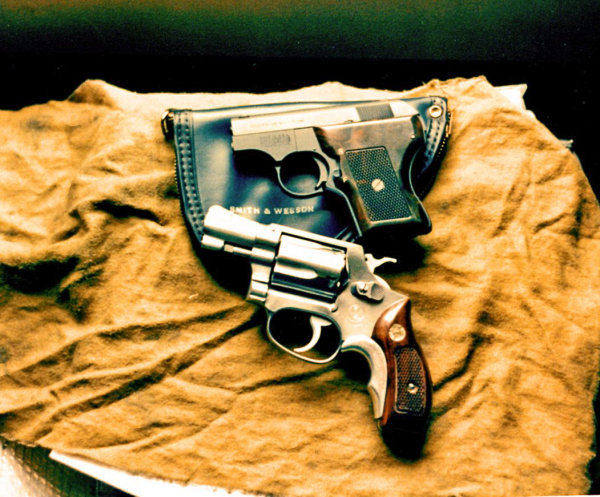
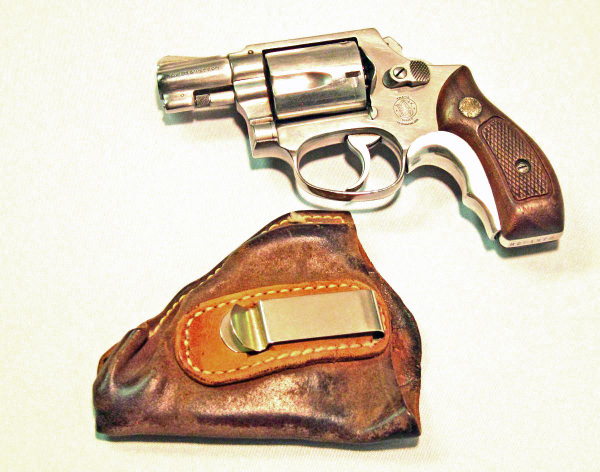
The grooved trigger of the original M60 was sharp. The “Magna” stocks, S&W wood that ran to the top of the frame, didn’t cover the gap between the rear of the trigger guard and the front strap of the gripping area of the frame. The spurred hammer, meant to allow thumb-cocking (which is contraindicated for defense use), would snag on pockets. I checked that and ripped a pocket on my jeans.
Nice.
Hard to shoot due to sights and trigger, hard to get a decent grip – I found its only upside was the ability to conceal it.
I used a Bucheimer suede IWB clip-on holster to wear the gun in my waistband up front – long before the birth of the cool kids who “literally discovered” front-of-the-waist carry. In my tight blue jeans, under a t-shirt, the gun was hidden. The clip on the Bucheimer was long and narrow, compared to the Bianchi clip-on holster I later purchased. I found the former stayed in the waistband when I drew; the same wasn’t true for the latter.
I cut the clip off the Bianchi and made it my pocket holster. It allowed perspiration in - wool uniforms were the order of the day, cold weather or hot – and I found that “stainless-steel” wasn’t … stainless.
A colleague had just gotten a Model 57 41 Magnum and a Bianchi Model 27 break-front duty holster. He didn’t like the target hammer ripping his sleeve cuffs. As he went to excise the offending hammer spur, he asked about my M60 – and he clipped it too.
S&W Centennial revolvers had already existed – and were sadly discontinued. It was before people discovered you could shoot double-action. This was my alternative.
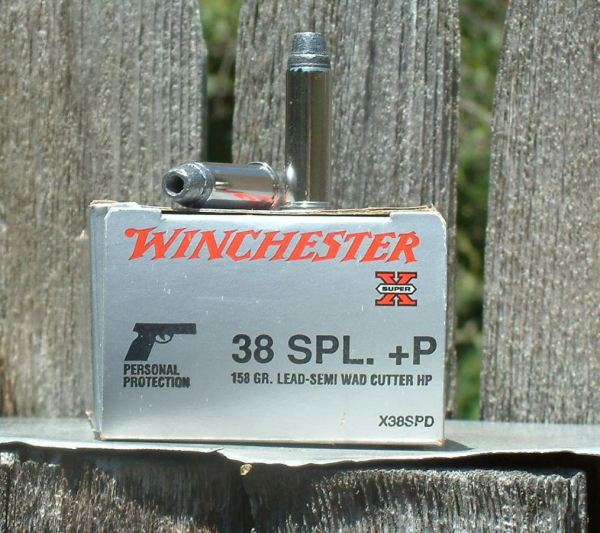
Loaded with Winchester X38SPD, also known as the “Chicago load” and the “FBI load,” I felt I was pretty well taken care of. Even then, I was less worried about the round expanding. The load apparently did expand in 4” service barrels, but the 1 7/8” tube of the Chief would be less likely to help it attain the needed velocity.
Since I didn’t like the gun, how did it help me learn to shoot snubs?
I had to work at it. I added a Tyler T-grip grip adapter to fill that space between trigger guard and front strap. The hammer was dehorned and there wasn’t enough mass removed to compromise reliability (something that concerned me). Changing nothing else, I carried the gun in a career spanning four different agencies.
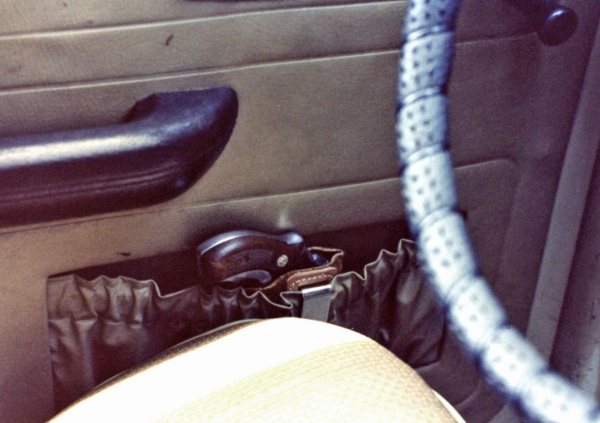
I found that the leverage that I could get on that trigger firing this small a gun helped me to learn double action shooting. Having to strain to see those sights helped me “miss less.”
And, with use, the action got smooth and the serrated trigger (still so today) likewise smoothed up.
Now, the snub is in relative ascendancy. The sights are wider, more visible and -with some guns – more readily changed. The stocks are better, Centennial versions are not only in production but better laid out than the early guns.
Still, this M60 is the one that got me here. It could well be the last to go, because it was the one I depended on to get me home when everything else failed.
It’s an echo of a voice long silenced. And I’m glad it was here.
— Rich Grassi